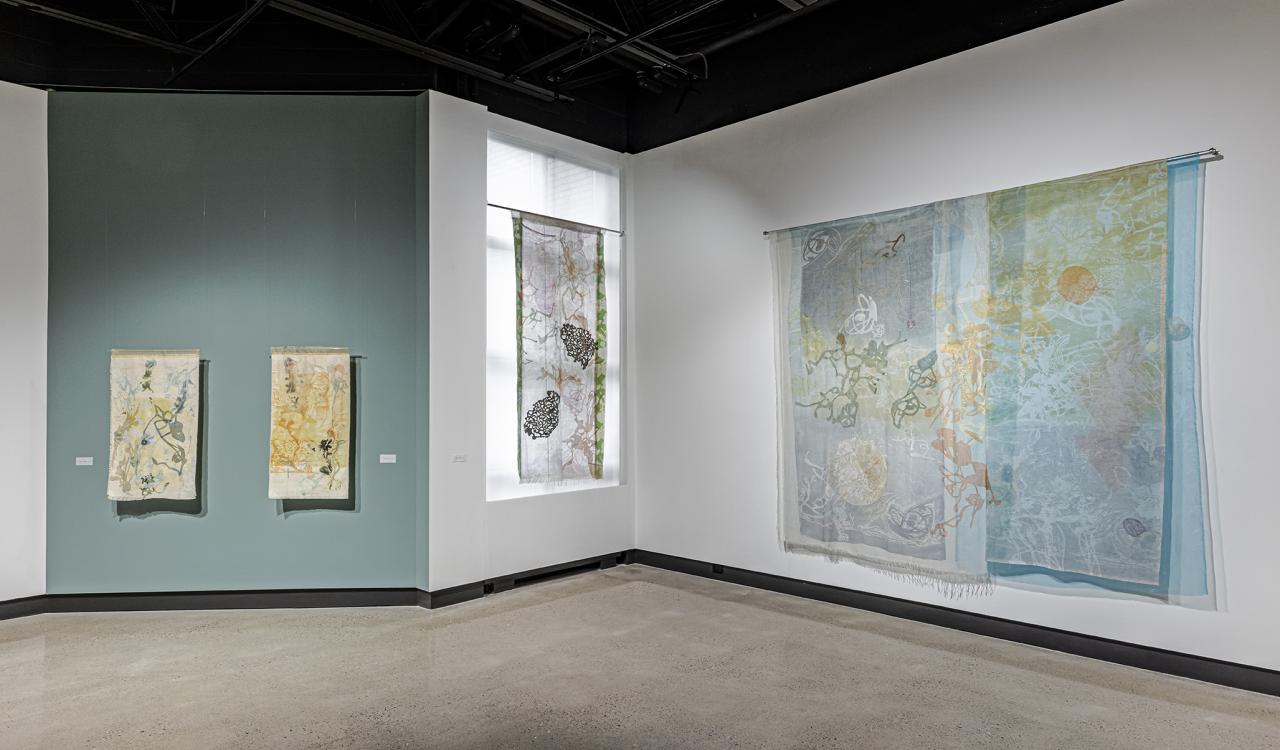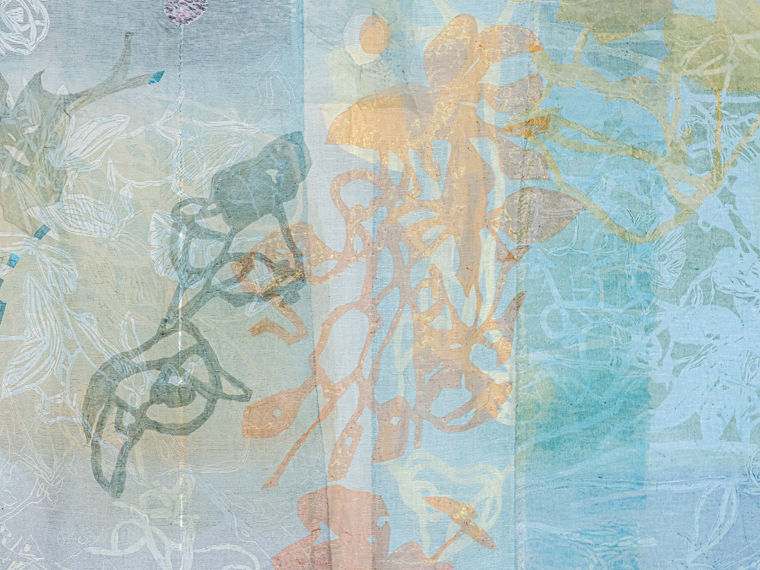Curated by Alix Voz
Shallows is an exhibition that represents my current focus on imagery derived from wetland habitats. My first experiences with wetlands came early in life growing up on a farm near Point Pelee National Park and working in the Visitor Centre at the park for many summers. My love of these environments evolved over the years into a deeper concern for loss of these habitats and all that they support. Wetlands are unique places with environmental, spiritual, health, cultural, and social significance. They are rich biodiverse environments that team with life and provide an ever changing and evolving source of beauty. In these times of water and climate crisis, they play a major role in water filtration, flood mitigation, soil stabilization, nutrient cycling, groundwater recharge, carbon sequestration and habitat for a diverse range of species, and plants (including medicinal and food sources).
I research concepts and imagery for my work through environmental readings, on-site drawing, underwater photography, sound recordings in wetland areas and through discussions with environmentally minded people. I am very grateful for artist friends such as Briana Palmer who helped to expand my print practice and my ideas of environmentally responsible approaches to art. I am also appreciative of McMaster University connections in biology, hydrology, English and Cultural Studies, and many other disciplines that have informed and deepened my commitment to environmental concerns.
My studio practice embraces a poetic approach. The translucent flowing layers of fabric and play of light suggest a fluid ambiguous space that acts as a visual metaphor for water. Printed, collaged, and sewn additions reference plants and amphibians from local marshes either directly or in abstract ways. The large-scale work entitled Reflections includes a frog chorus sound component recorded in a Bruce Peninsula wetland providing a more immersive, sensory experience.
This body of work incorporates fabric and sewing practices celebrating tactile material engagement and a return to attentive process. I am attracted to the slow pace of fibre-based work that is process oriented, measured, gentle and purposeful. Fabrics and sewing invite associations with concepts of mending, healing, and transformation, to reinforce ideas repair. References to patching and the piecing together of fragments welcomes ideas of connection and renewal that are coupled with wetland imagery to suggest preservation, restoration, and celebration of these important habitats. There has been a wealth of scientific data on environmental concerns throughout my lifetime with many different strategies for raising awareness. The message here is not saturated with scientific data, nor does it prescribe any specific environmental action. It presents a quiet, visual experience intended to envelop the viewer in a space conducive to personal reflection, and caring about a habitat that is rapidly and quietly disappearing, despite its significance to our own survival.
Judy Major-Girardin received a BFA from the University of Windsor and an MFA from the University of Alabama in Tuscaloosa. She is Professor Emerita from the School of the Arts at McMaster University where she taught for thirty-nine years. She lives in Cambridge Ontario and has served as Co-Chair of the Cambridge Sculpture Garden since 2005. Her studio work includes an integrated practise of painting, printmaking, drawing, artist books, and hanging fiber-based works that raise awareness for the preservation and celebration of wetland environments. Employing environmentally responsible studio practices is central to her work. Judy has exhibited in Canada, USA, and internationally and has attended artist residencies in British Columbia, Newfoundland, Quebec, Massachusetts, Pennsylvania, Alabama, Portugal, New Zealand, and most recently in France.











